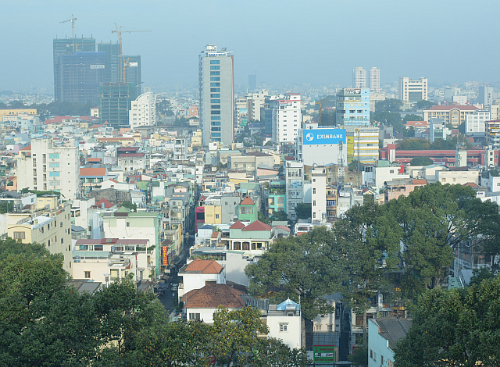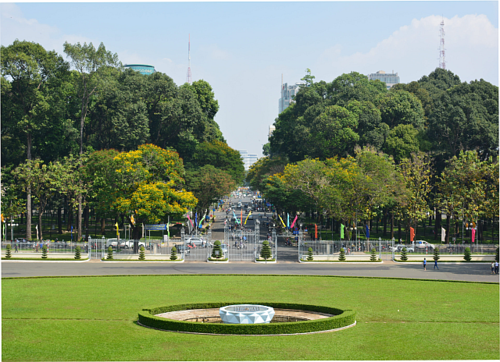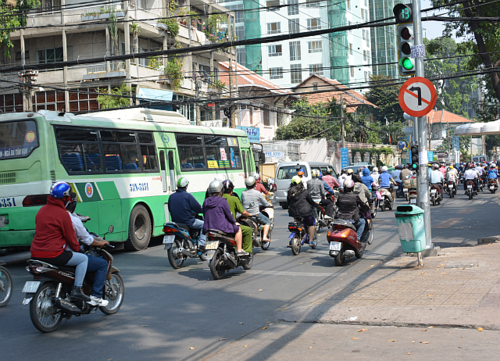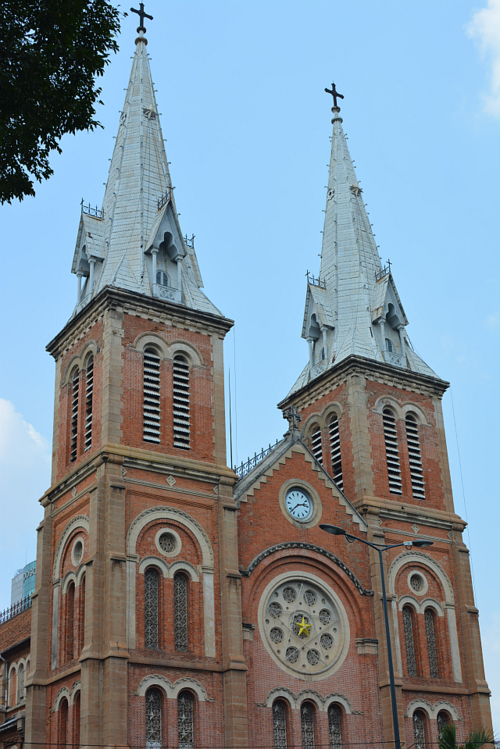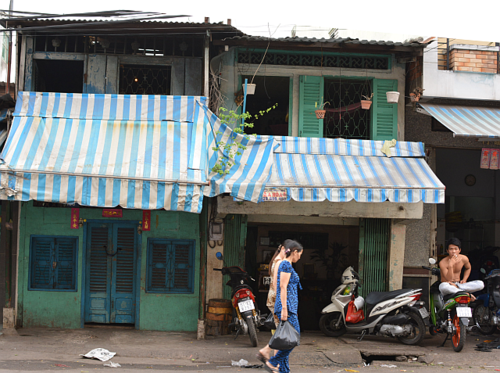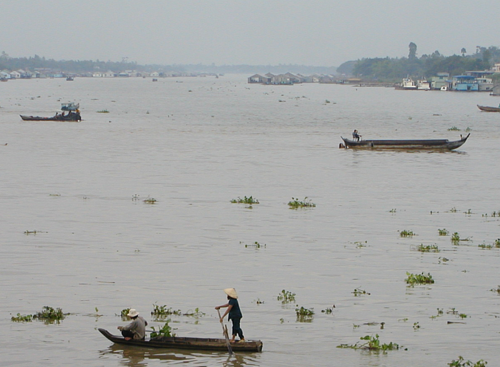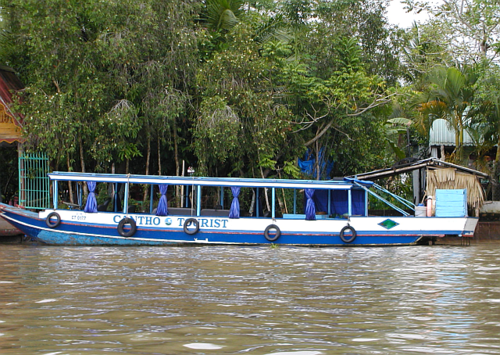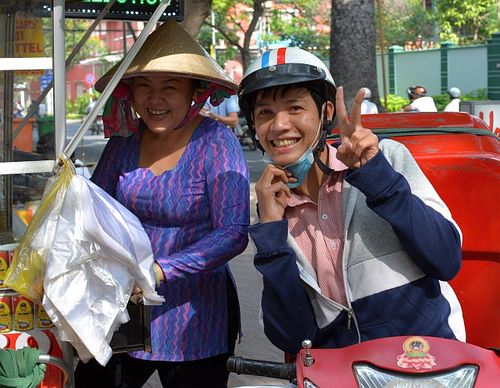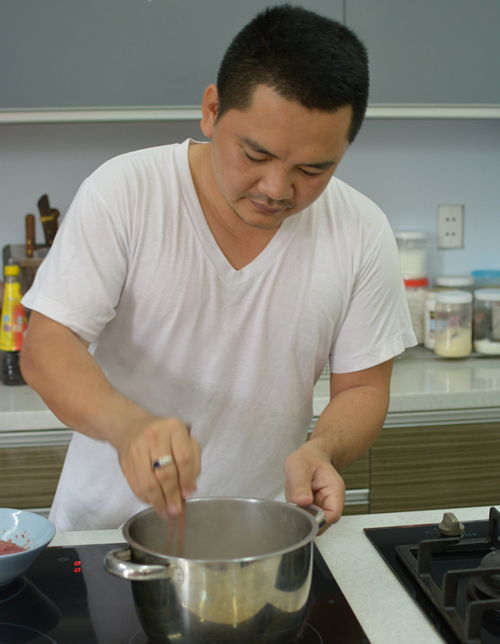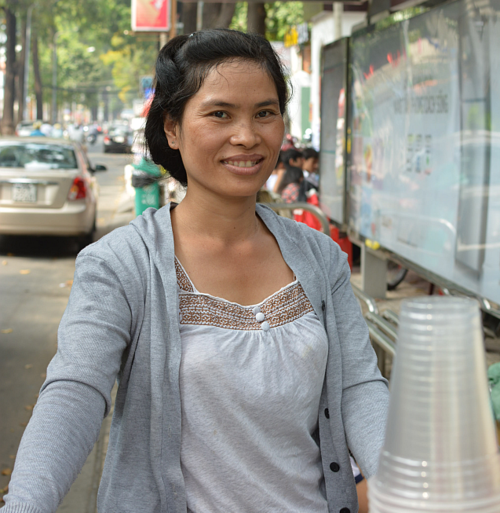April 30, 1975 is a significant day for many Vietnamese people. How you feel about it depends on which side you were on four decades ago. For my family, that date marks the day that we arrived in California. We luckily managed to escape from Saigon on April 24, tasted glorious freedom for a week in Guam, and were then transported to Camp Pendleton Marine Base in Southern California, which served as one of the resettlement facilities on the mainland. That day was also a day of sadness.
As a six year old at the time, things were fuzzy. However, what I do recall on April 30, 1975 was hearing adults repeatedly say “mất nước rồi” (the country is lost already). The North Vietnamese communist had arrived in Saigon, the city where my family lived, signaling that the country had collapsed into their hands.
For South Vietnamese people of a certain age, April 30, 1975 became ngày mất nước, the day the country was lost. For the North Vietnamese of a certain age, the date was ngày chiến thắng, the day of victory. Vietnamese people born after wartime may think of April 30 as just another day. I considered those perspectives, along with those of Vietnam War veterans, while watching Last Days in Vietnam, a riveting, academy award nominated documentary that you can watch here.
I’ve been back to Vietnam five times since my family left in 1975. It was painful the first time around and I cried when we landed in Saigon at Tan Son Nhut, the airport and landmark point of departure for those lucky to leave by plane. On each of the first three trips, I stopped by my family’s former home near Cong Ly Bridge (it’s en route from the airport into town). I’d look at the building, take a photo, and shared it with my family.
But on the last trip in January 2014, I didn’t want to check up on the house, which was turned into a preschool years ago. It’s no longer our home. We gave it up and the subsequent occupants stripped it clean of whatever that had remained of our family.
Vietnam has changed and continues to change. Some places like Notre Dame Cathedral in Saigon remain, as do the charmingly decrepit buildings around Cho Lon (Chinatown) and the ladies in pajama outfits; both are below. But the life that swirls around the city makes me I agree with my parents who say that it is “no longer our country.” They are not interested in revisiting. I imagine that it may be too painful for them. They may not recognize it. I remain curious because I’m looking for connections, not for me as a six year old child, but for me as an adult.
As a writer, I ask a lot of interview-type of questions, perhaps as many as Vietnamese strangers ask of me: How long have you been away, sister? Where do you live now? Is that your husband? Do you have children? How often do you come back to visit? If you are a Viet kieu (overseas Vietnamese), you have experienced these somewhat awkward moments.
To get a fair exchange of information, I ask questions in return to get a sense of their experience.I’ve been collecting stories from people I’ve met in Vietnam, and here are a few to consider.
A driver I hired to take my husband and me through the Mekong Delta turned out to be the same age as me. With the windows up and the air-condition on, her shared his personal story. When the communists came to Saigon on April 30, 1975, he and his mother were frightened and hid under their bed. His father had some kind of military connection. His adulthood hadn’t been easy. He and his wife had children, and school was not free in Vietnam. If he and his wife wanted to ensure their kids performance, they had to pay someone off.
If he got into a minor fender bender with the car he was driving us in, there would be payoffs to the police officer and other people that would cost him out of pocket (the company he worked for didn’t cover such expenses for its drivers.) There is no true free healthcare. If you go to the hospital, you must pay someone to cứu (rescue) you. Otherwise, you wait and pray. He and his family were clearly hardworking and bright but they saw few opportunities to move up in life.
Similarly, a young man who took us on a river tour in Can Tho explained in excellent English that he was dying to study in America. He’d take the right exams, applied many times, but was always denied a scholarship award. I’d known of people who were able to study abroad but they had family money and/or party connections.
So much for the communist promise of redistributing resources. Those 2007 conversations made me feel extra grateful for not having been stuck in Vietnam.
The tenor of my January 2014 visit to Saigon was different. For example, I met Mai (below), a banh mi vendor in Saigon. When we discovered that we the same age, it’s as if we were kin somehow. She explained that her banh mi business was a new side thing she started because she wanted extra income.
Her husband had a good job. Her son was in college. She wanted to have a business near her home (about 50 yards away), that was for her neighborhood. Her banh mi stall set up, which I wrote about in a best Saigon banh mi story, brilliantly produced outstanding sandwiches. In the past, street food vendors developed their craft for survival. Mai clearly made me know that this was a business not born out of desperation.
My friend Cuong Pham, the owner of Red Boat fish sauce, introduced me to Vo Quoc, a 34-year-old entrepreneur based in Saigon. Vo Quoc had a cooking show, published multiple full-color food magazines, cooked and catered high-level events for Hanoi government officials, and ran a cooking school. He was a food media mogul who’d fallen cooking because he wasn’t great at school. Vo Quoc traveled abroad to explore the food scene in America and elsewhere. We both marveled at his success, as if to say, “Can you believe it? Look how far Vietnam has gone!”
Then I met a young woman on Pasteur street. She had a beverage stand on the street, near Pho Hoa. We got talking as she hacked open a coconut for me. She asked the normal questions but when I revealed that my husband and I lived in California, she suddenly responded, “I’m going there in six months!”
What? For vacation? No, to move to America permanently, she said. Her family lived in Santa Ana, we finally figured out. They had gotten her papers to leave. She was scared.
“I have no friends there. I have no occupation there,” she said.
“Don’t worry. Your family will help you,” I replied. “Your life in America will be full of many good things. You will have great opportunities.” I took the above photo of her so I could remember her, should we ever cross paths again.
Related posts on April 30, 1975:
- Revisiting the Fall of Saigon 40 Years later (how my family and others escaped)
- Chicken Back and Celery Rice Recipe (a ghetto-ish but luxe dish we made when we first came to America in 1975)
- Cooking Vietnamese Food in 1970s America: Things We Were Grateful For (drinking water for one...)
- Inside My Mom’s Book of Domesticity: Recipes and Stories (what she brought from Vietnam, what inspired me to write my first cookbook)
- Gratitude Fried Wontons Recipe (we made wontons and threw a party for people who helped us resettle)
Terrific links to explore:
- Camp Pendleton Vietnamese Refugee Experience (great story and video by Viet journalist Anh Do and the Los Angeles Times)
- The Last Days in Vietnam (documentary available for viewing on PBS' American Experience)













